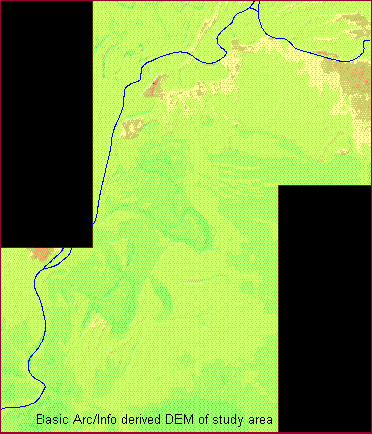
Figure 4. The Tisza valley in flood, visualised using VRML
In the context of the Upper Tisza Project, GIS has already been used to facilitate the study of data yielded by intensive field survey in the context of a highly dynamic palaeo-flood environment (Gillings 1995). These initial analyses have been characterised by a marked concern with traditional, highly functional factors such as notions of flood risk and economic potential. As a result of severe limitations in the quality of the archaeological dataset, due to the reconnaissance nature of the survey programme with its methodological bias towards chronology at the expense of composition, there has also been a heavy reliance upon data simplification and reduction. Through simple programmes of hypothesis testing and exploratory data analysis, the spatial relationships between survey-derived activity foci and facets of the GIS-derived palaeo-hydrological system have been investigated (Gillings 1995 ). Although in the course of these studies the bias towards environmental factors was discussed and the artificiality of viewing past peoples as static, reactive entities acknowledged, no practical or theoretical methodology was proposed to explore these notions more fully. More recently, the area of the earlier case study has been utilised in a practical attempt to apply some of the more experiential and sensual concepts and approaches discussed. In beginning to consider in more detail the archaeological information it became clear that notions of nature and culture could not, and should not be regarded as discrete and exclusive entities to be assigned primacy and individually quantified and analysed. In the volatile and highly dynamic flood-plain an integrated and synergistic notion of culture and nature is critical. At the crudest level, to deny the deep social implications of a flood dynamic which acted both as a temporal referent and served to re-define the surface texture of large areas of the flood-plain is highly simplistic.
In addition to the realisation of the redundancy of adopting either a primary natural or cultural stance, was a growing awareness of the inappropriateness of traditional viewshed-based analyses in exploring the social landscape of the flood-plain. The first limiting factor concerned the resolution of the digital elevation model (DEM) upon which such analyses are based.

Figure 3. DEM of Upper Tisza valley generated using Arc/Info
The bulk of the flood-plain environment can at best be described as flat; this is not to say, however, that it is featureless as topographic change is present but it is both subtle and highly localised. This point has been noted to great effect by researchers undertaking the Fenland Survey project where:
The development of an eye for the landscape was crucial for the field survey; just as native fenlanders speak of slopes or even hills in what to others appears a featureless and flat landscape, so too the Fenland Survey workers were able to develop a sense of place, and unerringly approach areas high in potential, if low in elevation (Hall and Coles 1994, 10)
Although in the case of the Tisza project the most detailed topographic information available was utilised in the construction of the DEM, it is unlikely that this 0.5 metre contour resolution was fine enough to encapsulate and incorporate precisely the socially significant micro-topography. As a result it is clear that any traditional viewshed analysis is likely to reflect and confirm arguably insignificant general landscape trends at the expense of the significant localised detail.
A second and more fundamental limiting factor relates directly to the unique, privileged and external vantage point adopted by the researcher in assessing the effects of a given palaeo-flood event. Frequent reference is made in earlier publications to the way in which the intrusive flood waters visually resulted in a complex partitioning of the available social space. It is, however, critical to realise that this interpretation is based solely upon the visual appraisal of an abstract, vertical plan (e.g. Gillings 1995, plate 1). Important questions have to be raised concerning how this relates to any flood impact as experienced from within the landscape. To help to clarify this issue a visit to the survey area was undertaken during the Easter period, when the plain, although no longer flooded, held considerable volumes of standing water in the web of relic channels and oxbow features that cross its surface. Here it rapidly became clear that the subtle topographic variations that characterise the flood-plain area effectively served to mask the intrusive standing waters from view until the very edge of the flooded area was reached. In becoming aware of the presence of a body of water or waterlogged land, the visual encounter came at exactly the same moment as that of the more immediate senses such as smell, that most potent of memory triggers, and, more importantly, touch, as the texture of the ground surface began to soften. The abstracted visual sense of the flood-plain in flood as a single re-organised and re-partitioned space was not in evidence. Here the sense of immediacy in encounter was paramount, and it was only as one began to climb into the piedmont zone of the bordering Zemplen Hills that any sense of structure and partition became manifest. Emphasis within the GIS research programme has now shifted to explore more fully the immediacy and multi-sensual nature of this experiential encounter with the intrusive water and to look at how this can be integrated into the detailed exploration of people-place relations in the volatile flood-plain.

Figure 4. The Tisza valley in
flood, visualised using VRML
© Internet Archaeology
URL: http://intarch.ac.uk/journal/issue1/gillings/part4a.html
Last updated: Tue Sep 5 1996